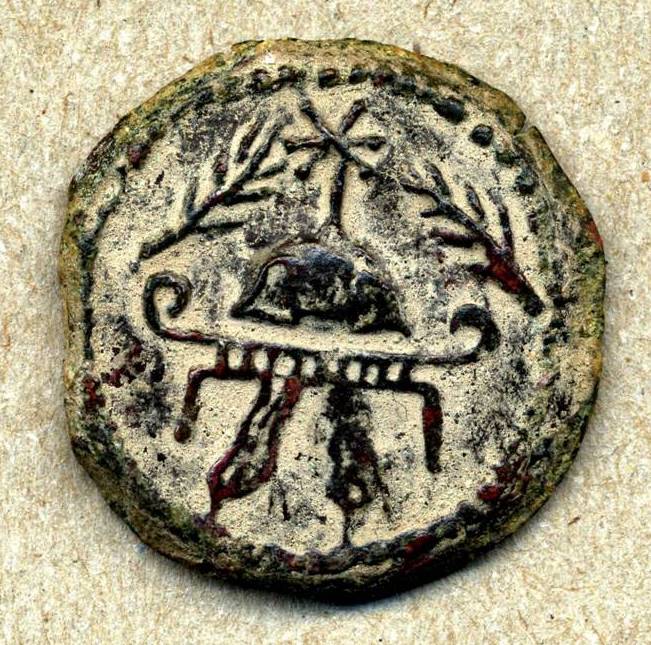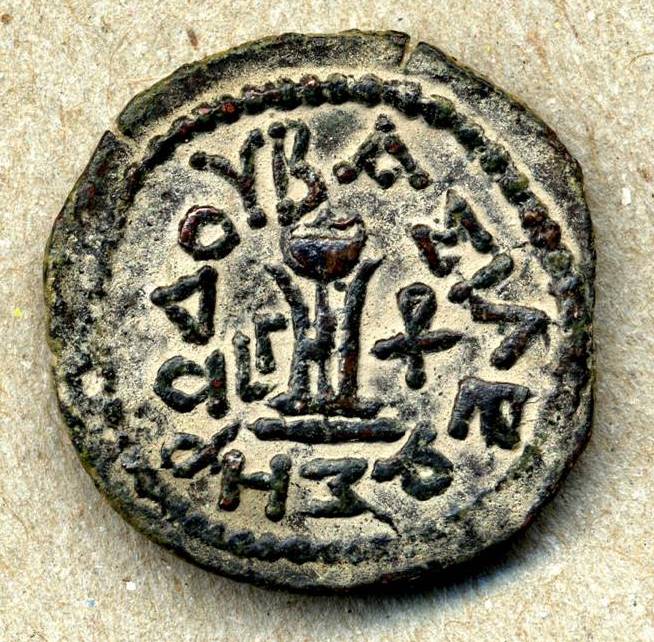Rome’s Appointed Ruler Mints Coins
Date- 35/34 BCE
Current Location- Private Collection
Language and Script- Latin, alphabetic
General Information-
After the Roman conquest and overthrow of the Hasmonean Dynasty, Herod the Great was appointed as king by the Roman emperor. He instituted major changes in Jewish coinage, though some of his early issues were quite similar to those of his Maccabean predecessors. Following biblical restrictions, none of his coins were minted with human representations, which would have offended the populace. From there the coins diverged from their predecessors- the inscriptions were only in Greek, not Hebrew or Aramaic; pagan or Roman symbols were used for decoration; traditional Jewish symbols were eschewed, although some of the objects shown have been interpreted as objects used in the Temple cult; and, perhaps most notably, Herod initiated a system of dating for coins, though by happenstance only the coins from the first years of his reign were dated.
Many of Herod’s innovations are seen in the bronze coin shown here. On the obverse (the viewer’s right) is a tripod holding a bowl. To the left of the tripod is a symbol representing the date, “year 3,” or 35/34 BCE. To the right is a monogram. The inscription encircling this face of the coin reads, BASILEOS ERODOU “Herod the King.” On the reverse (left) is a thymiaterium (incense burner) between two palm branches. Both the tripod and the thymiaterium have been taken to represent vessels used in the Temple service.

